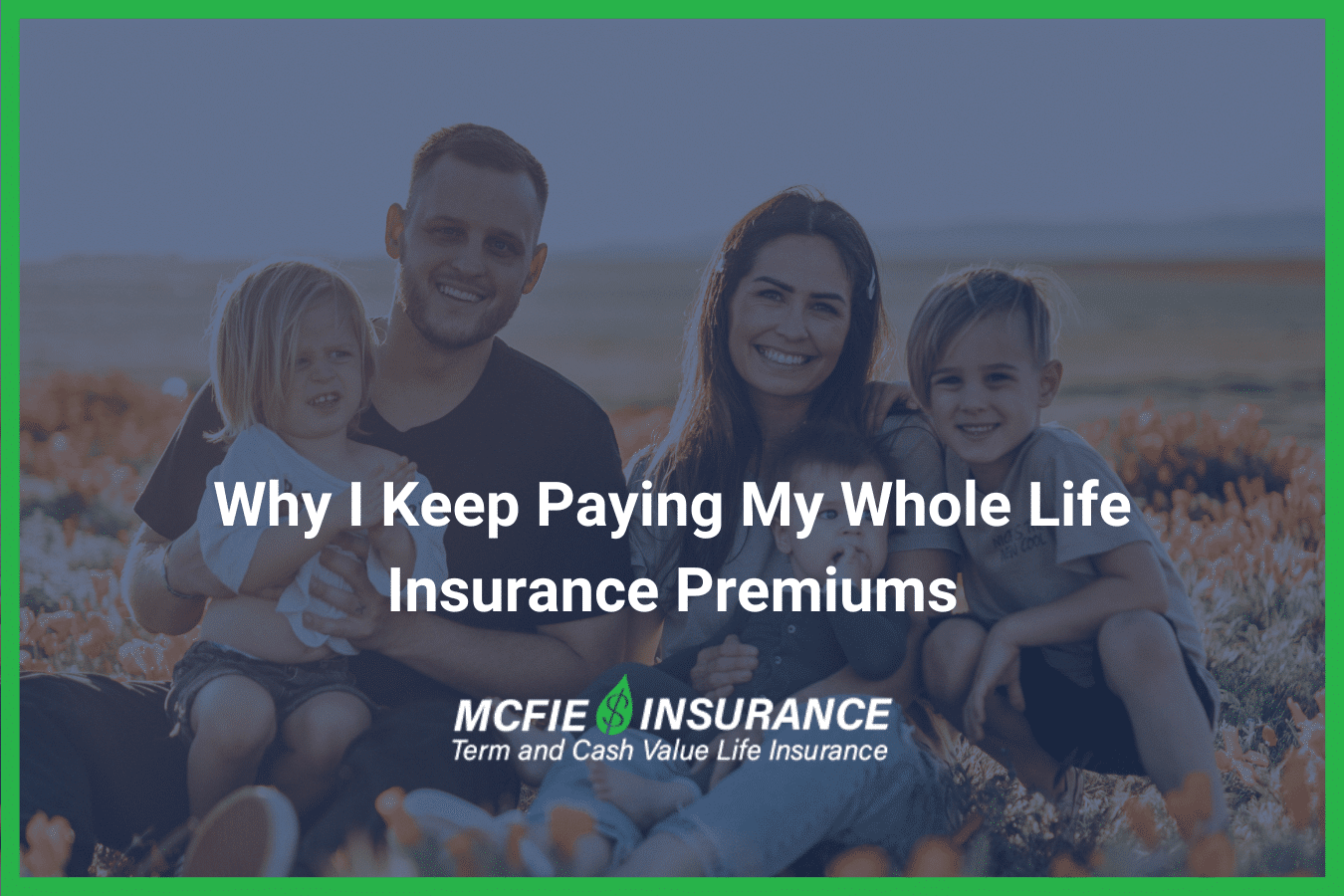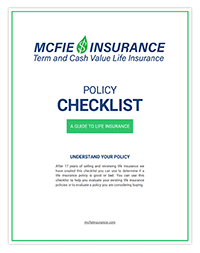702-660-7000
702-660-7000

I’ve often been asked why I continue to pay my whole life insurance premiums when I could potentially earn a higher return by investing in the stock market, real estate, mutual funds, or other ventures. I always smile at this question because:
Some of my best investments have been in real estate. Owning real estate can be very lucrative and offers benefits from several sections of the internal revenue code not applicable to other types of investments. However, I don’t enjoy the time commitment required to invest full-time in real estate. Many of my clients who are real estate investors appreciate having access to capital when they leverage the cash value of their whole life policies. Cash value in a whole life policy is a cash equivalent. Those who hold cash or cash equivalents can quickly and easily leverage those funds to purchase assets or invest while continuing to earn a return on their cash or cash equivalents. This increases the value of any asset purchase or investment.
It’s a common mistake to consider the cash value of whole life insurance as merely a return on premiums paid. Instead, the cash value reflects the equity (ownership) in the underlying face value of the policy. Like a mortgage, every premium payment on a whole life insurance policy means a part of the policy’s face value is completely paid-up, with no further premium due on that portion again.
Regardless of how long premiums are paid, whole life insurance is guaranteed to last the lifetime of the insured, with a payout of the death benefit to the beneficiaries. Those who believe term life insurance is less expensive than whole life are only considering a short period of the insured’s lifetime, typically when the insured is young and healthy.
Term life insurance, unlike whole life insurance, has premiums that increase over time. To maintain the same death benefit at age 80 as a whole life policy, term life insurance will cost significantly more. For example, a healthy 20-year-old male who purchases a ten-pay whole life policy for $10,000 per year for ten years will have $1,485,732 in death benefit at age 80. Maintaining a term life insurance policy for this individual for this same time period would exceed the cost of the death benefit.
Term life insurance does not build equity, though some more costly term policies provide for a return of premium at certain ages. Term insurance is like renting; unlike whole life insurance, there is never any cash value or cash equivalent developed in a term policy.
As I approach age 64, the cost of term insurance to match my current whole life coverage would be $31,000 a year for the next 20 years. After those 20 years, the cost for me to continue term coverage would increase to $1,399,880 per year and exceed $2,672,000 per year by age 90. My whole life premiums cost me a fraction of this annually, with a guarantee that the premium cost will never increase. My cash values grow significantly each year, providing me access to more capital than what I have paid in premiums for my whole life policies.
Regarding a higher rate of return as mentioned above, I consider the average investor’s return over the last 20 to 50 years. Studies have shown that the average investor has earned around 2.1% over the past twenty years. Jack Bogle, the founder of Vanguard Mutual Fund, noted in his book “Don’t Count on It,” “Over the past 50 years the average investor has earned a mere 2% based on the historical market return of 11.3%, minus fees, taxes, and inflation.”
I continue to pay my whole life insurance premiums because I’ve lived through multiple market corrections and know people who have lost 30% to 80% of their investment earnings in market crashes. Market corrections always require time to recover, and time is something I have less and less of the older I become. But even for younger persons, lost time cannot be recovered. The formula investors use to project future portfolio value includes time as a key variable. Losing money today means I will never attain the value I could have gained because time has been lost. My whole life insurance cash value is never lost, but continues to compound annually, so I don’t have to worry about losing time.
Another reason I continue to pay my whole life insurance premiums is that whole life insurance provides a contractual death benefit greater than all my premium payments combined, plus a very liquid guaranteed cash equivalent that has protected my money better than the average investor has been able to do over the past 20 to 50 years. Whole life insurance cash value has also increased my free cash flow. Free cash flow is the money left over after all expenses, debt, and liabilities have been paid. Jeff Bezos founded Amazon on a free cash flow metric rather than a return-on-investment metric. He was mocked until 2004 when Amazon took its first profits. Since then, “more and more CEO’s have gravitated towards this metric because it is not subject to estimates or assumptions.”
Determining how much cash or cash equivalent to keep on hand varies from person to person. The real question is, “How much cash on hand do I feel comfortable keeping?” This will determine how well you are prepared for future needs, investments, or asset purchases. Cash is king, but too much cash on hand can lose value due to inflation and taxes. This is another reason I keep paying my whole life insurance premiums. The value of the $10,000 I pay annually on my first whole life policy I started purchasing 19 years ago is only worth $6,267 compared to what it was worth 19 years ago, due to inflation. Today, paying the $10,000 premium generates $21,000 of additional cash value, which means my policy’s cash values have beaten inflation over the past 19 years.
I treat my cash much like Will Rogers did: “I’m not so much interested in the return on my money as I am the return of my money.” My cash value has not only kept my cash safe but has also allowed me to leverage it for capital I need to invest, acquire assets, give more abundantly, and live more prosperously.
Having a whole life insurance contract where the cash value keeps up with and even beats inflation increases my ability to access more capital while my cash value continues to compound as if it hadn’t been leveraged. Using borrowed funds without higher capital costs increases the bottom line of all my investments and asset purchases. Failing to consider the cost of capital reduces profitability. The cost of capital can be the lost interest on money spent or the cost of interest and principal paid to a lender. The cost of capital must be considered to determine real profit. A dollar spent earns 0% indefinitely, while a dollar invested may or may not provide a return. However, a dollar spent from leveraging my cash value doesn’t stop my cash value from compounding annually.
 |
Policy Checklist Make Sure You Get a Good Policy Is your policy good or bad? Use this checklist to help evaluate your existing life insurance or a new policy you are considering. |
Paying whole life insurance premiums has allowed me to finance many things over the last 19 years, including major appliances, automobiles, equipment, business expenses, real estate, remodeling projects, personal expenses, education, travel, and vacations. When I leverage my cash value to finance these things, I can recover the cost of what I financed. This has been worth more than all the premiums paid for my whole life insurance policies. With the cash value in my whole life insurance policies growing between 2.5% to 4% annually, I can leverage it for a purchase, repay the insurance company, and restore the ability to leverage this cash value again. This process has greatly increased my free cash flow and allowed me to become a hard money lender.
Whole life insurance dividends, classified by the IRS as a return of premium for tax purposes, are the insurance company’s profits shared with policyholders. I’ve used these dividends to purchase more paid-up insurance, significantly increasing my whole life policy equity and the capital I can access anytime.
Requesting a policy loan is easy. There’s no application or underwriting process, just my signature. Typically, within days, the borrowed money is in my bank account, ready for use. My cash value is a cash equivalent, easily and readily converted to cash, allowing me to take advantage of opportunities without waiting for traditional funding.
With some of my whole life policies, I’ve chosen to stop making premium payments because the cash value is growing faster without premiums than if I continued to pay them. This option becomes possible when there’s enough paid-up insurance in a whole life policy to keep the policy in force. I’ve reduced the death benefit on some policies by eliminating any face value that hasn’t been paid for. Then I have stopped further premium payments. In whole life insurance, the cash value must equal the death benefit when the contract matures. The cash value in my policies which I have “reduced to paid-up” or “reverse paid-up” (RPU), continue to grow annually, even without further premiums. All dividends paid continue to purchase additional paid-up insurance, increasing the death benefit and cash value in all of my policies.
I continue to pay my whole life insurance premiums because I love my family and want them to have the tax-free death benefit guaranteed when I am gone. This is the primary reason anyone needs life insurance—a legacy. Businesses use life insurance to fund buy/sell agreements or employee benefit plans, like banks use bank-owned life insurance (BOLI) and corporations use corporate-owned life insurance (COLI). Personally, I use it to bless those I love by multiplying what I will leave them, which is beyond what I could accumulate without the use of life insurance. We are told “A good man leaves an inheritance to his children’s children.”
When people ask why I continue to pay premiums on my whole life insurance policies when I could earn a higher return by buying term and investing the difference, I remind them that many people have believed they can earn a higher return, but achieving this consistently is quite rare.
Contact McFie Insurance at 702-660-7000 to discover how you can use whole life insurance as a financial tool and become more prosperous.
Tom McFie is the founder of McFie Insurance and co-host of the WealthTalks podcast which helps people keep more of the money they make, so they can have financial peace of mind. He has reviewed 1000s of whole life insurance policies and has practiced the Infinite Banking Concept for nearly 20 years, making him one of the foremost experts on achieving financial peace of mind. His latest book, A Biblical Guide to Personal Finance, can be purchased here.  Tomas P. McFie DC PhD
Tomas P. McFie DC PhD
Note: Investing information provided on this page is for educational purposes only. McFie Insurance LLC does not offer advisory or brokerage services, and does not recommend or advise investors to buy or sell particular securities.